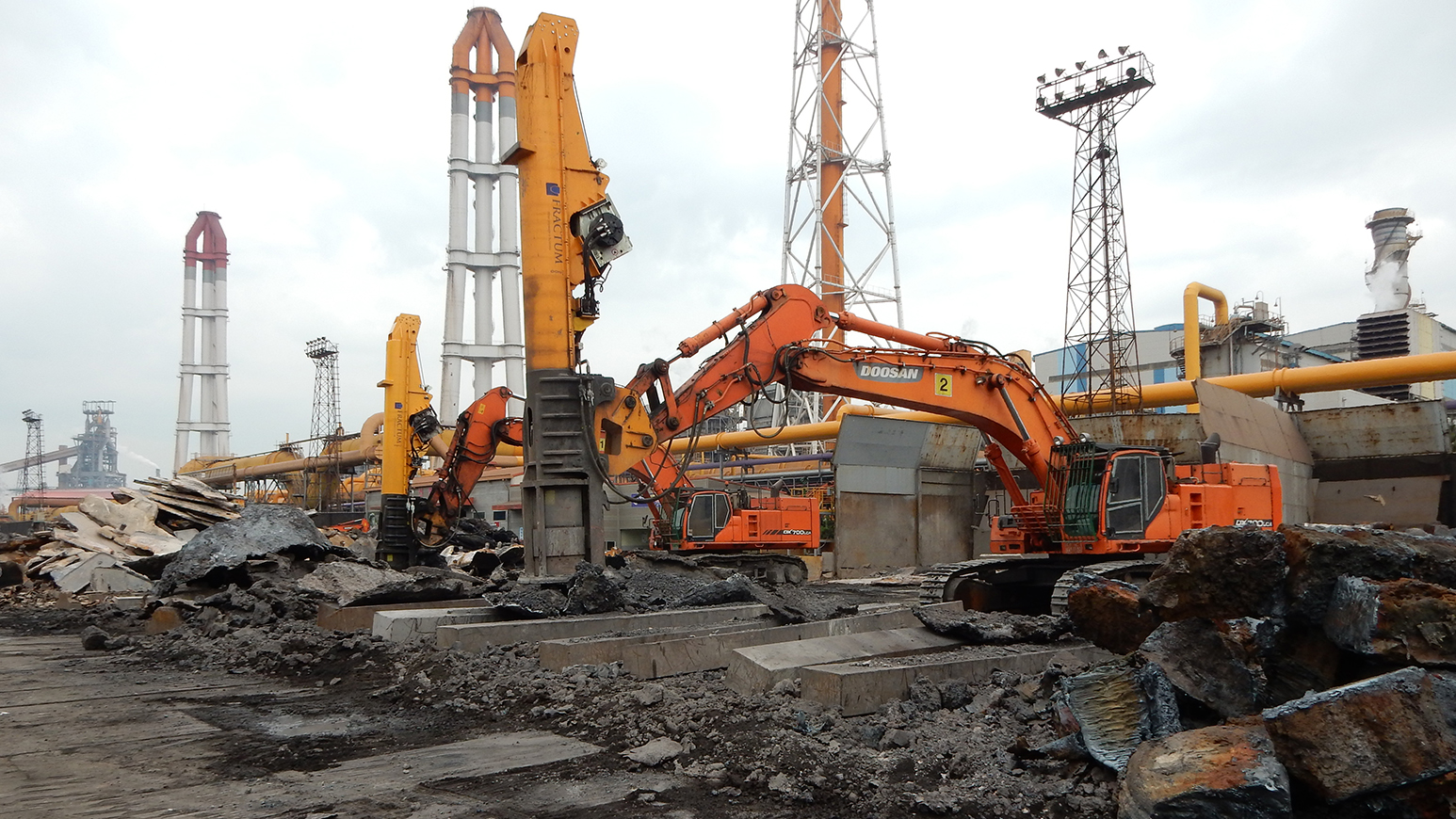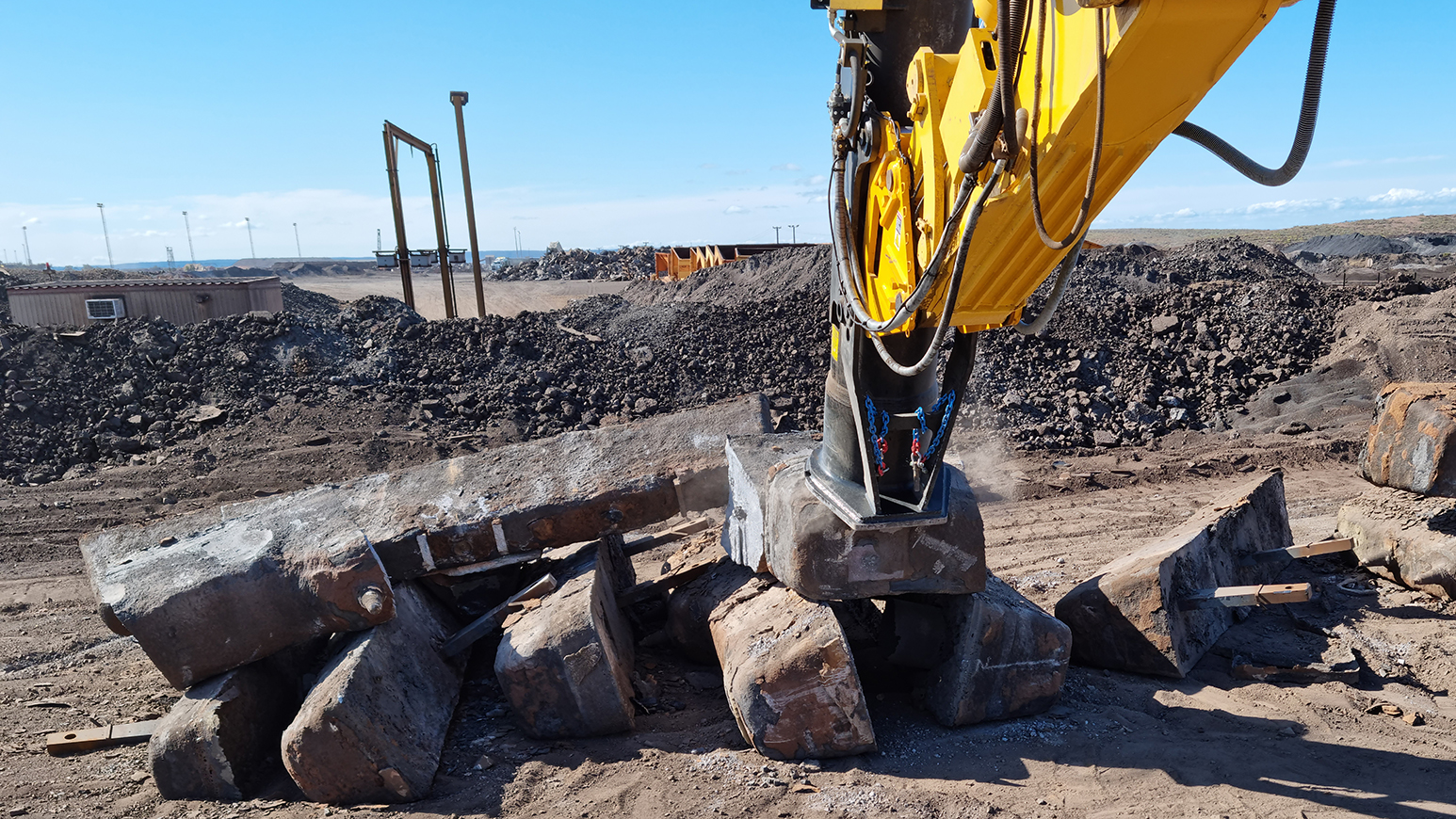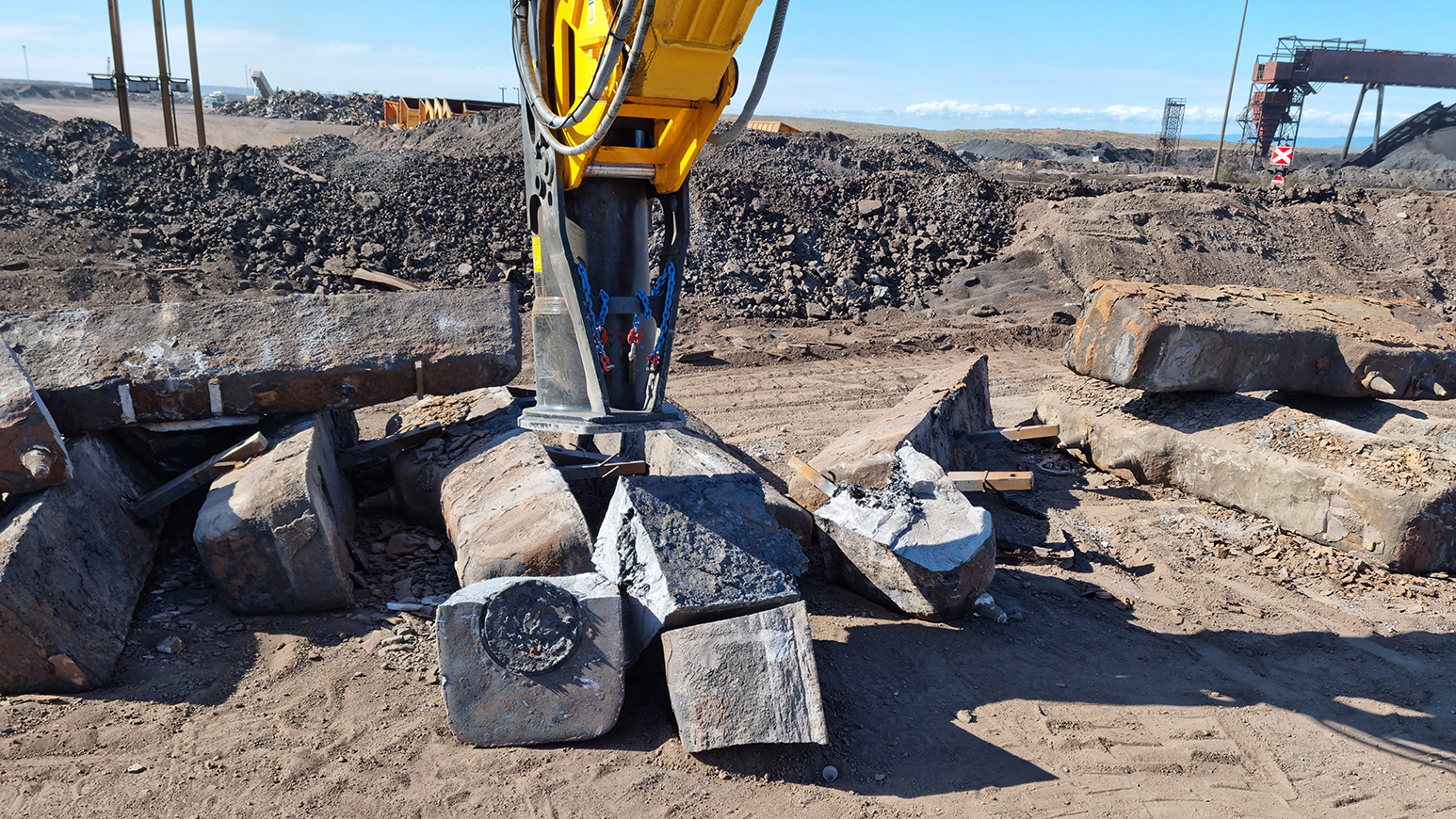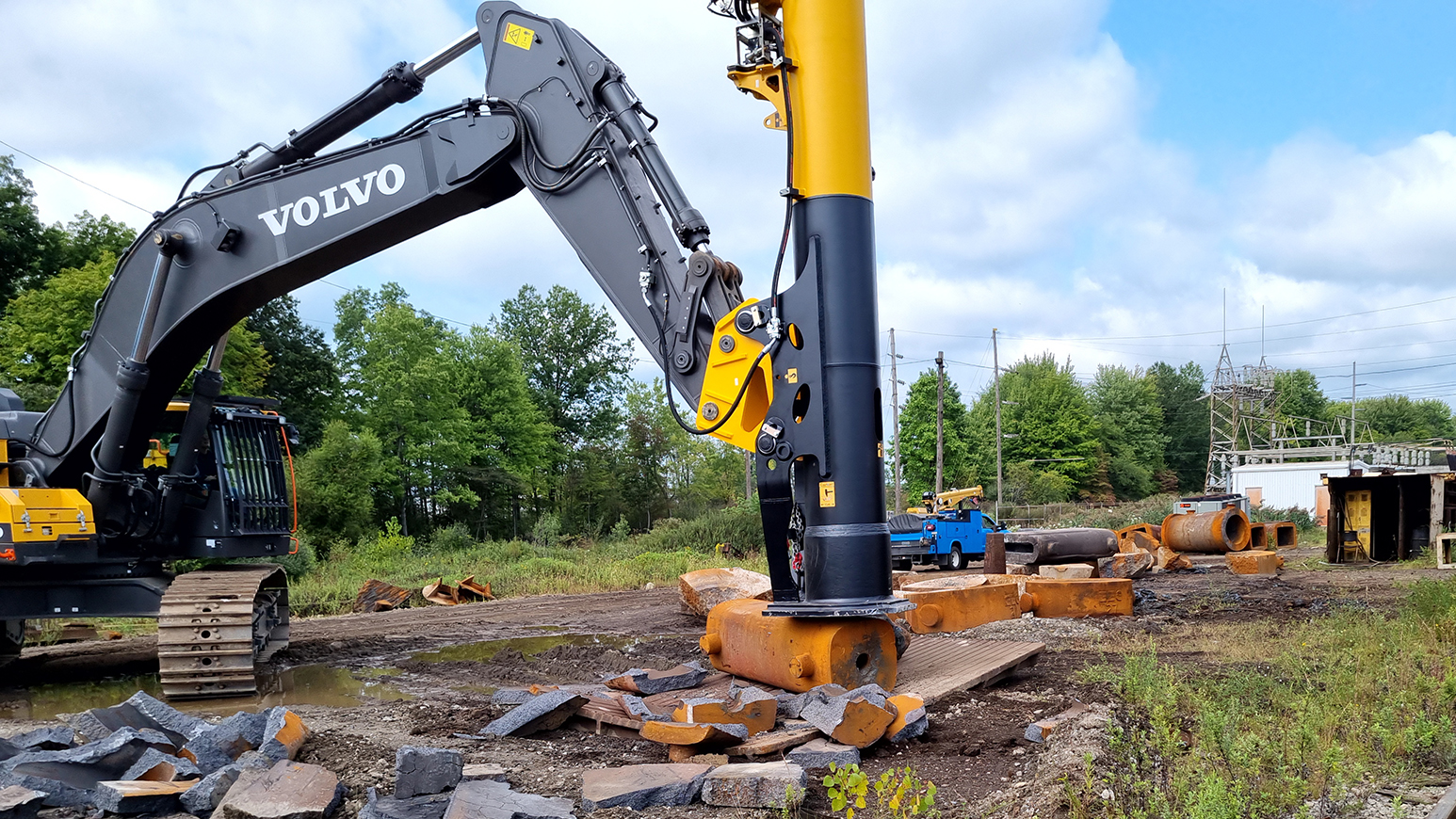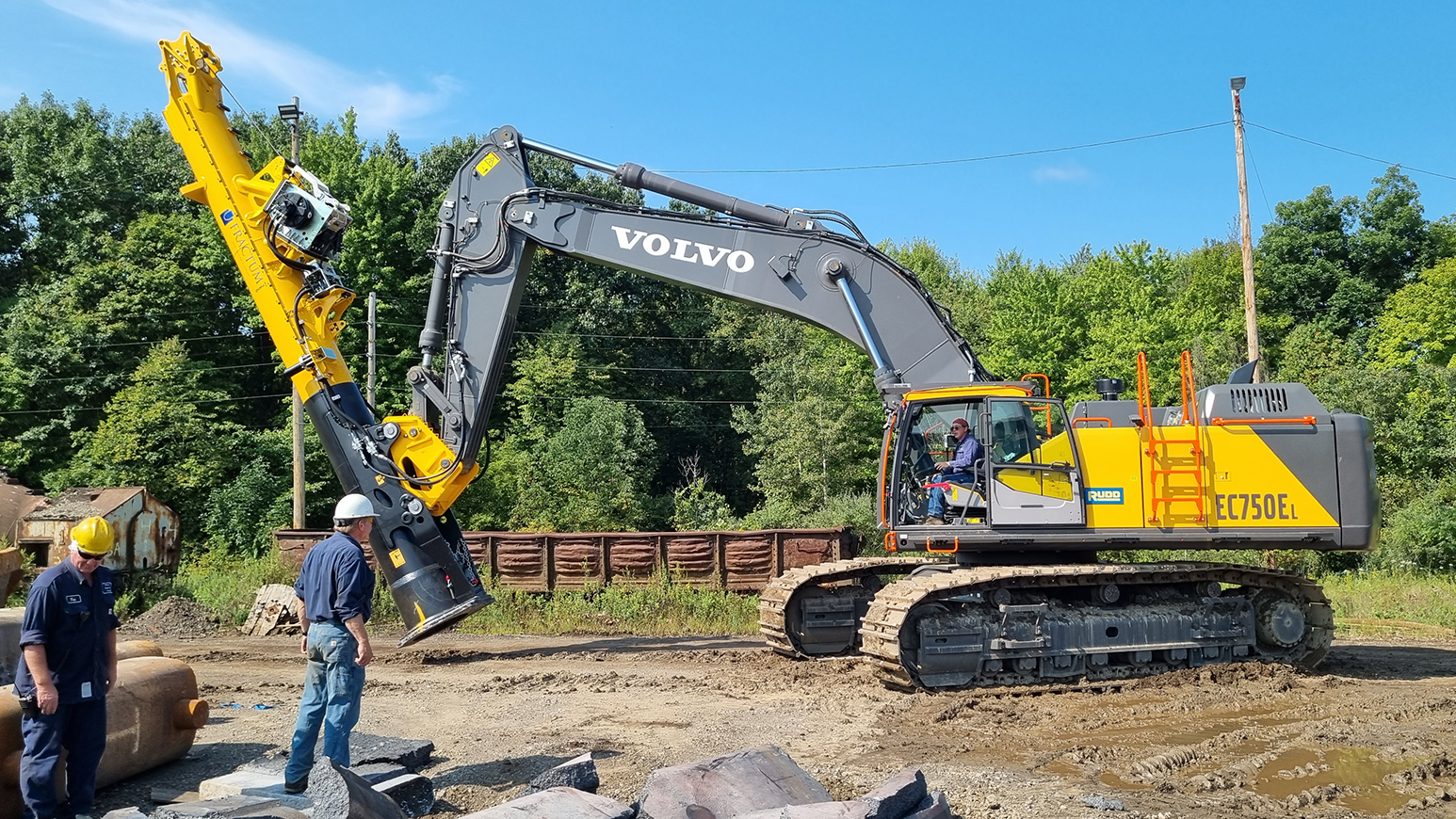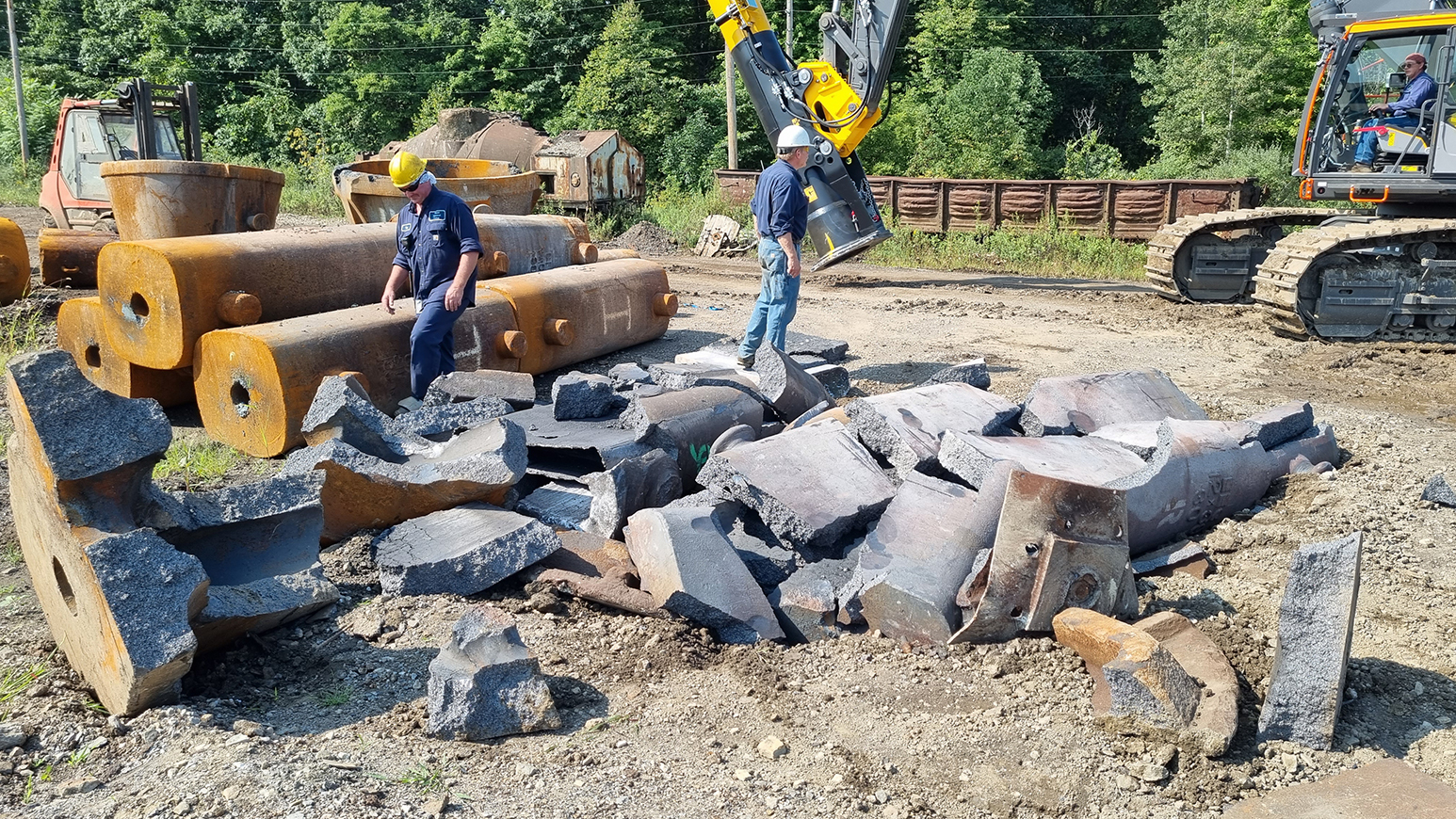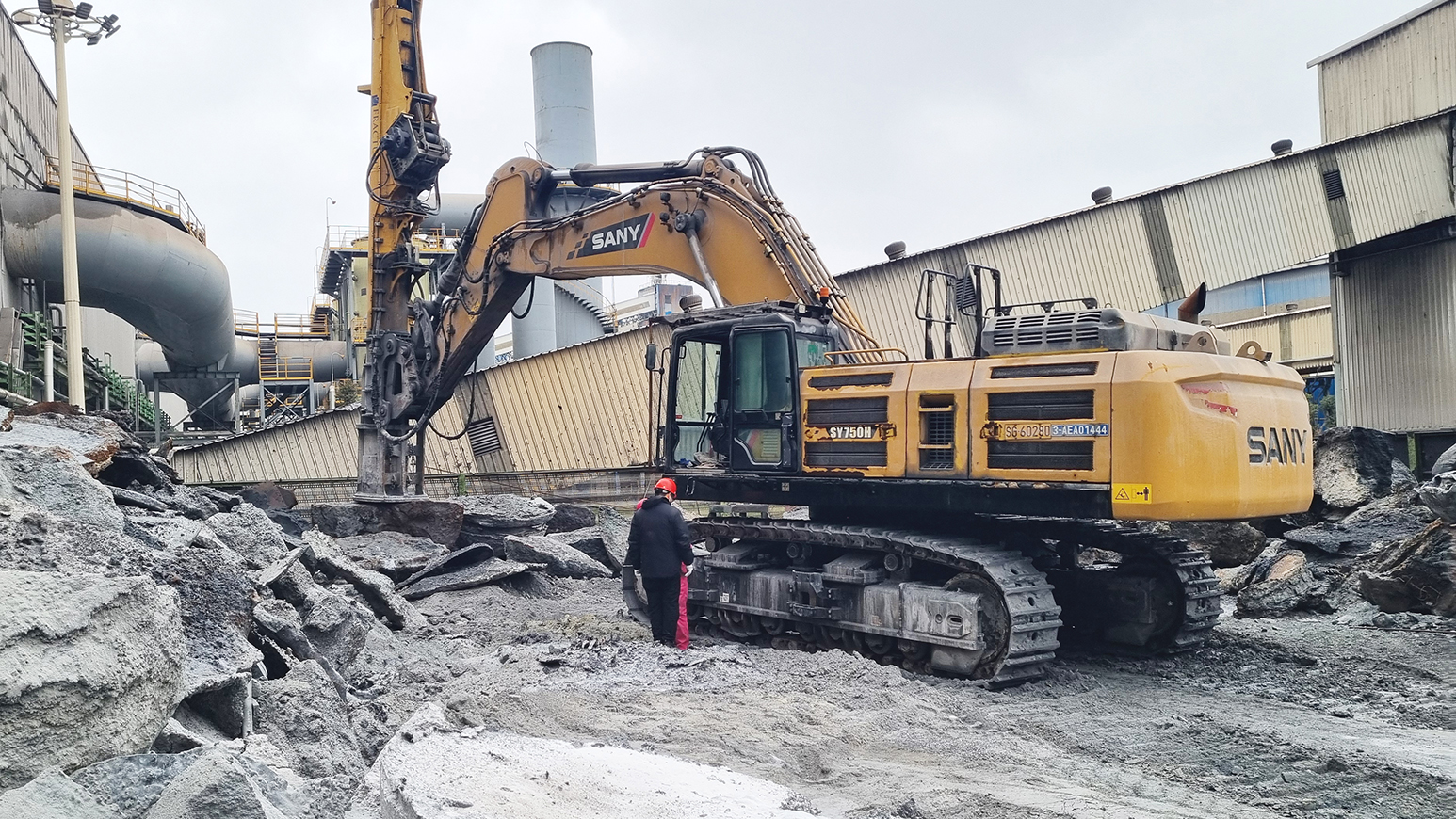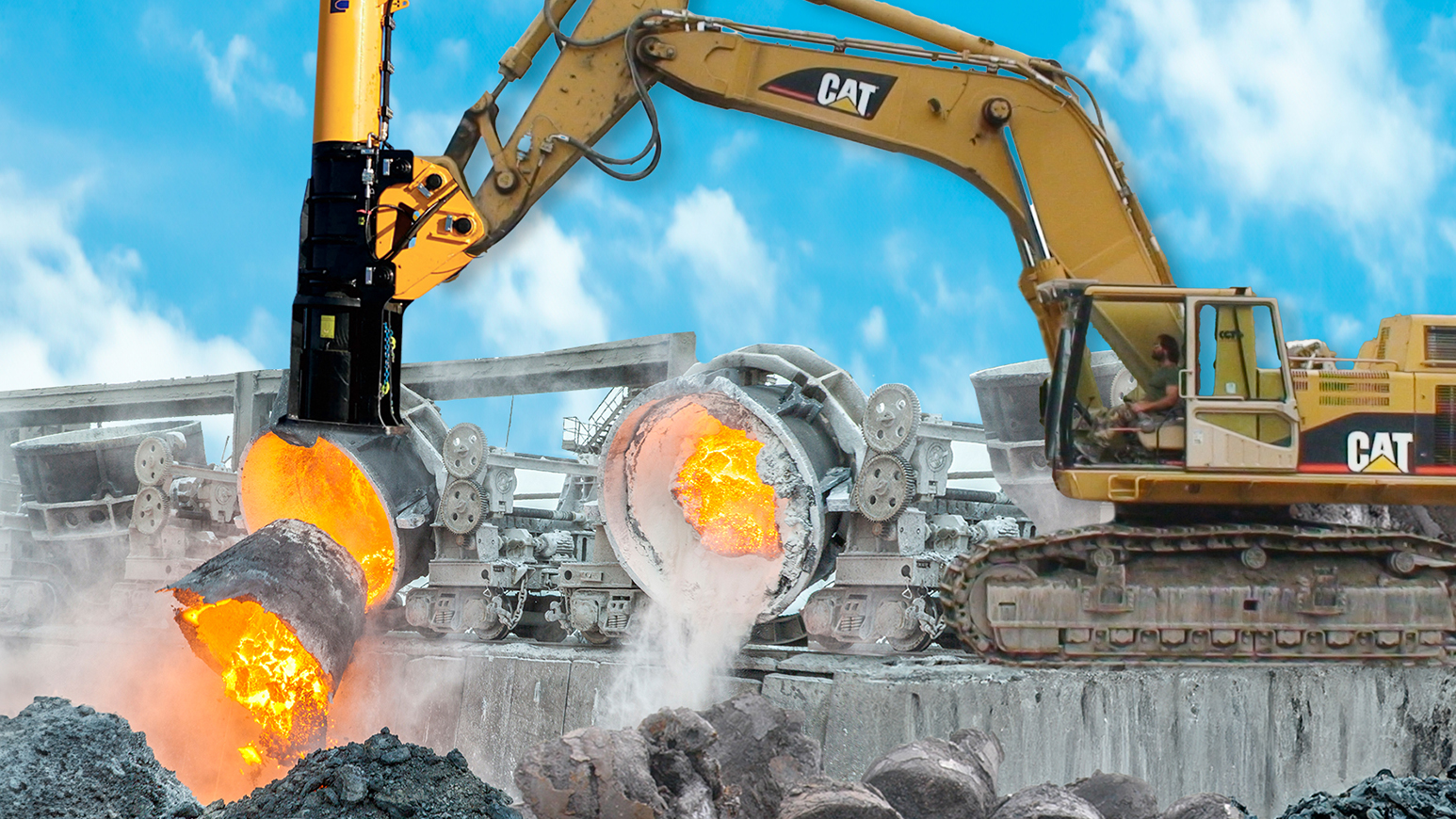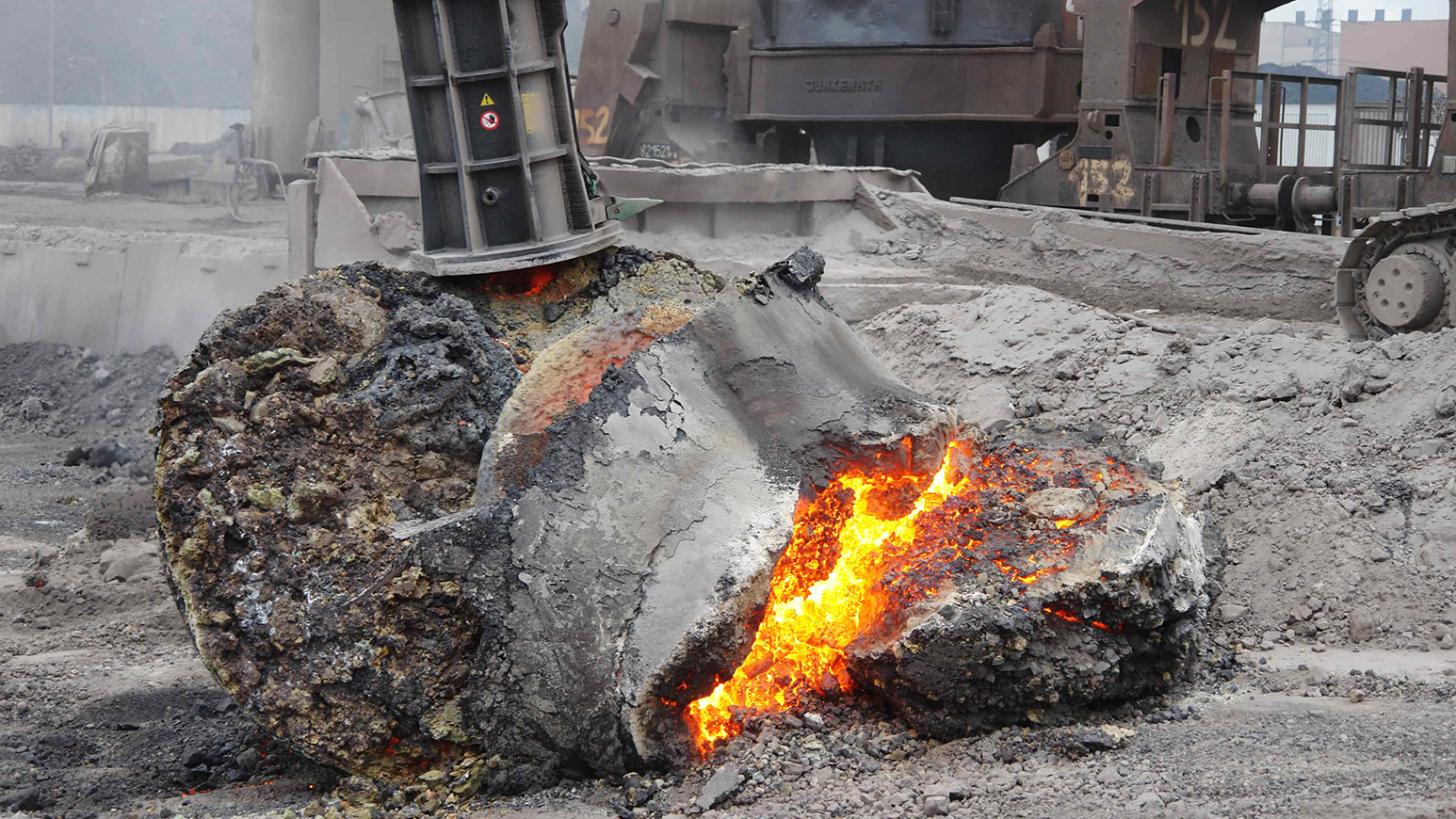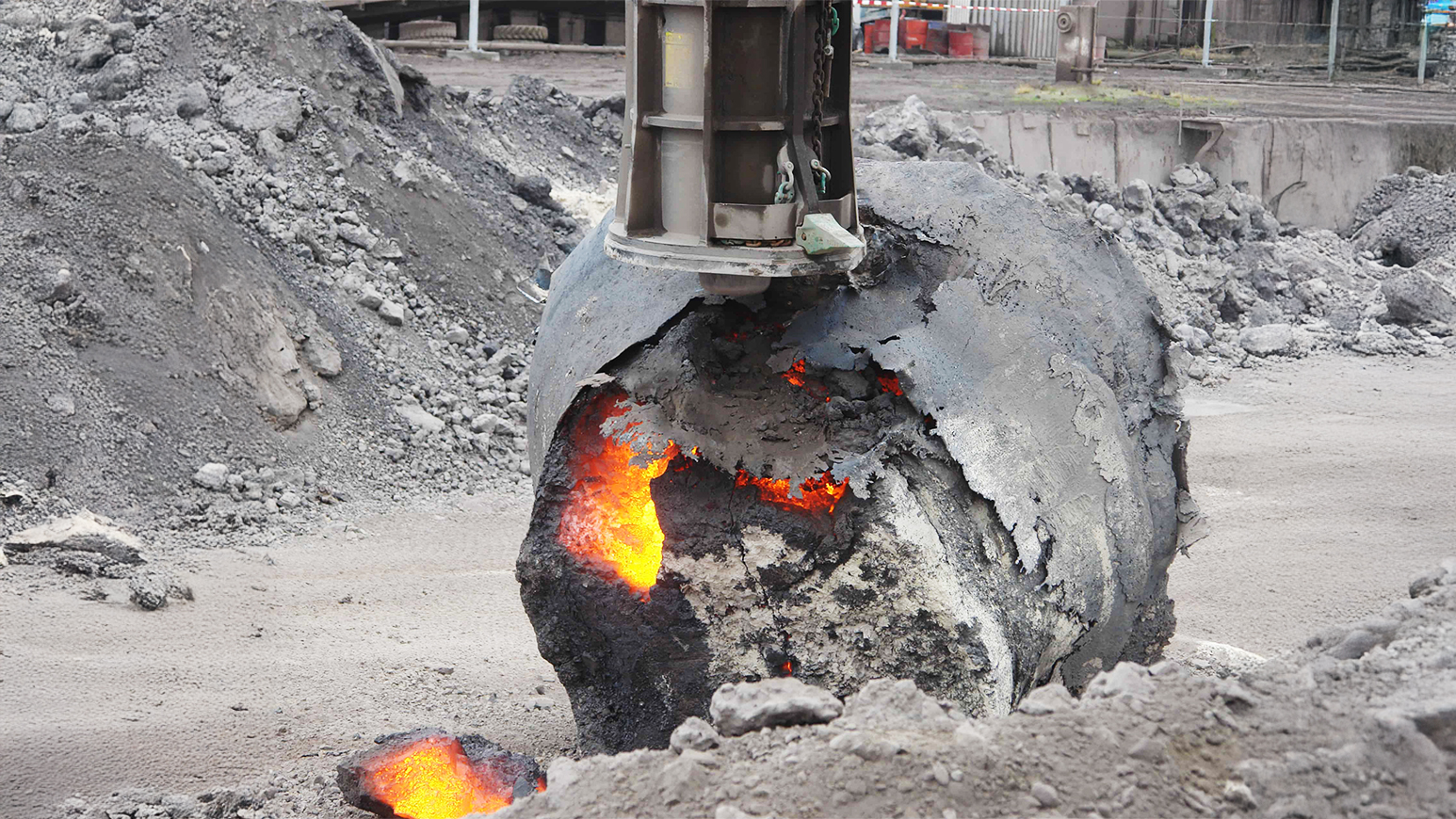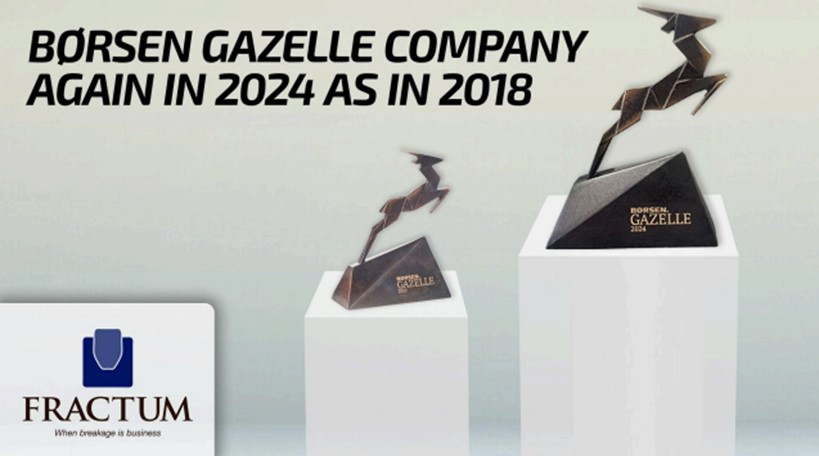
Fractum specialises in developing innovative impact breakers for the steel industry, focusing on the efficient recycling of slag, moulds, tundish and steel scrap. Our technology enables the on-site processing of materials, significantly reducing the need for transportation and associated carbon emissions.
This approach aligns with sustainable steel production practices, aiding companies in lowering their carbon footprint and adhering to green steel initiatives. Additionally, Fractum’s solutions eliminate the production of toxic fumes associated with traditional methods like oxycutting.
Also, by minimising vibrations and flying debris, the FRACTUM breaker enhances workplace safety and reduces wear on machinery. The safety standards of using our hammer completely eliminate the use of drop balling.
Driving the future of steel: Embracing green steel and sustainable practices
In an industry as pivotal as steel, where strength and innovation have shaped economies and infrastructures worldwide, a new revolution is underway – one driven by the urgent need to address environmental challenges. Employees in steel factories across the globe are recognizing their unique position to make a difference. By reducing the carbon footprint of steel production and integrating metal waste recycling and sustainable steel production, the steel sector can lead the way in creating a more sustainable future.
As a company, FRACTUM is deeply invested in the steel industry’s transformation. We understand the challenges and opportunities faced by steelworkers. This isn’t just about adhering to regulations; it’s about taking pride in solutions that align with a shared vision for a cleaner planet. Together with FRACTUM, you can address concerns surrounding carbon footprint reduction while maximising the benefits of recycled steel materials and eco-friendly steelwork innovations.
Waste-to-steel innovation: Turning challenges into opportunities
One of the most exciting areas of development is waste-to-steel innovation. This approach transforms waste materials into new steel products, reducing reliance on raw resources and diverting significant amounts of waste from landfills. By supporting and participating in these innovations, employees not only address environmental concerns but also enhance their factory’s efficiency and profitability.
Innovative solutions that help reduce steel companies’ CO₂ emissions are essential for a greener profile in steel mills. The Fractum hammer significantly reduces emissions by breaking up waste metals from steel mills into smaller pieces that are easier to recycle. The Fractum breaker emits almost no emissions compared to, for example, oxycutting, as it uses the excavator’s existing hydraulic system. Our hammer can operate over the entire steel mill, minimizing the use of excess metal waste transport and thereby reducing emissions. You can use the hammer right where excess scrap metal is dumped, making the recycling of scrap metal a breeze.
The push for green steel recycling
The concept of green steel is more than a trend; it’s a necessity. Traditional steel production is energy-intensive and emits significant levels of carbon, contributing to the global climate crisis. However, by adopting waste-to-steel innovation, steel factories can transform leftover materials, scrap, and byproducts into valuable inputs for new production processes.
Here, we write something about FRACTUM’s hammer.
How FRACTUM’s hammer helps carbon emission
The Fractum breaker offers a low-emission solution compared to traditional methods like oxycutting. Utilising the excavator’s existing hydraulic system eliminates the need for additional energy sources or combustion processes, significantly reducing its environmental impact while delivering efficient and reliable performance. Our hammer is capable of operating throughout the entire steel mill, minimising the transport of excess metal waste and effectively reducing emissions. Or simply bring the hammer to where you dump waste metals for recycling processing.
Recycling metal waste not only reduces the need for mining raw materials but also slashes energy consumption – two critical factors in achieving low-carbon steel. Steelworkers at every level play an essential role in this transition by optimizing workflows, improving efficiency, and ensuring metal waste is seen as an asset rather than a burden.
FRACTUM shares the goal of reducing the carbon footprint in steelwork
Every steelworker concerned about environmental impact can relate to the need for a carbon footprint reduction. The path forward is clear: embrace eco-friendly steelwork that prioritizes renewable energy, metal waste recycling, and efficient production methods.
With global attention increasingly focused on climate action, directional employees have a critical role to play. Their day-to-day decisions—choosing materials, maintaining equipment, and adhering to energy-efficient practices—add up to a significant impact on the factory’s overall carbon emissions. By committing to a shared goal of carbon reduction, steelworkers become key players in the broader movement toward environmental responsibility.
Metal waste reuse: A sustainable solution
Every piece of scrap metal has untapped potential. Metal waste reuse transforms what was once considered waste into an integral part of the production process. This approach aligns with the principles of steel sustainability practices by minimising the environmental impact and conserving finite resources.
Factory employees who embrace metal waste reuse are not just meeting quotas or following protocols; they are part of a larger mission. Recycled materials reduce dependency on raw ore extraction, cutting emissions and lowering costs. Whether it’s re-melting scrap for new production lines or finding innovative ways to reuse byproducts, the opportunities for sustainability are immense. By using the Fractum hammer in recycling and metal waste reproduction, you will lower your carbon footprint considerably.


